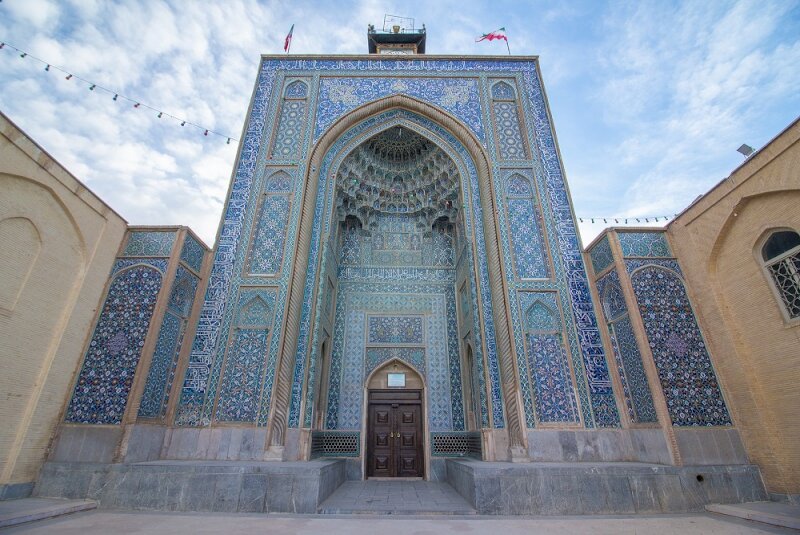Seljuk-era mosque in southeast Iran undergoes tilework restoration

TEHRAN – A team of cultural heritage experts and restorers has commenced work on arrays of tilework on the façade and interior of the Malek Mosque, which stands tall in the city of Kerman, southeast Iran.
“Currently, tilework of the eastern and northern sides of the mosque has undergone restoration,” the deputy tourism chief of Kerman province, Mojtaba Shafiei, said on Wednesday, CHTN reported.
“Malek Mosque is one of the most important places of worship in the city of Kerman and its antiquity dates back to the Seljuk era (1037–1194),” the official stated.
Stuccowork and flooring are amongst other tasks being carried out by the local restorers, he added.
Malek mosque, now known as the Imam Mosque, is one of the architectural gems of the ancient city. The courtyard in the middle of the building is very large. There is a small pool in the center of it. Each iwan was planned differently from the others. Although the iwans in the side wings appear similar to each other, there are some differences. The iwan in the west wing is less deep, while the other one is wider.
The entire facade of one iwan is covered with terracotta and brick in different shapes. The entrance to the section, where the dome in front of the mihrab is situated, is through an opening with a single ogee arch inside the iwan. The dome in front of the mihrab is small in diameter. The dome sits on the mihrab wall in the front, the mihrab wall in the rear, and three arches are placed between two rows of rectangular pillars created by two square pillars. These are connected by two small arches on the sides.
The faces of the arches of the arcades and portals are decorated with glazed bricks. These decorations were added at a later period. They comprise curved branches and compositions consisting of Kufic inscription bands on these panels.
AFM
Leave a Comment